Famine Explained: Definition, causes and facts
Samira Abdi fixes her eyes on her son as a nurse weighs him in a weighing basin at a nutrition center in the Melkadida refugee camp in Ethiopia. All five of her children were diagnosed with malnutrition after suffering weeks of stomach pain. They were immediately put on a treatment regime that included a high-nutrient supplement and treatment for related infections, but only three of her children have recovered. Like Samira’s children, approximately 45 million children under the age of 5 are suffering from acute malnutrition.
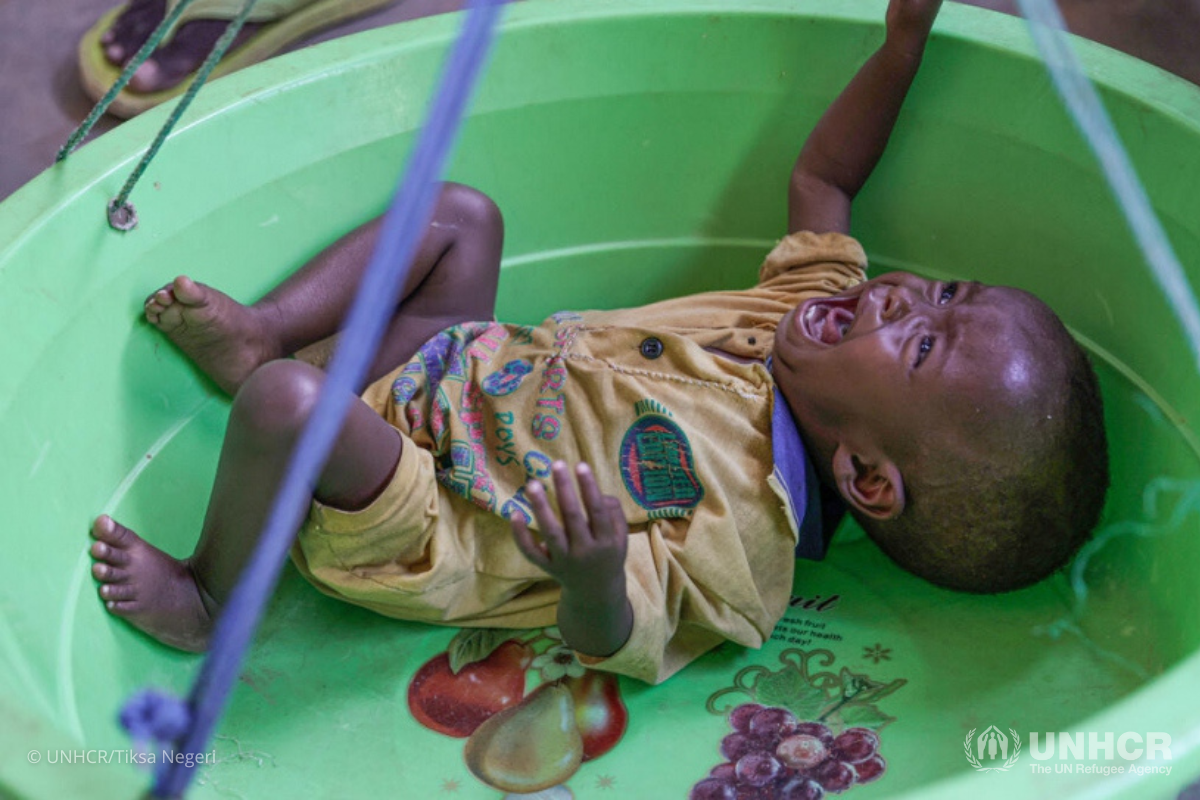
In a world where we produce enough food to feed everyone, 783 million people — 1 in 10 of the world’s population — still go to bed hungry each night. There are 37.2 million people at the ‘emergency’ phase of food insecurity, just one step away from a declaration of famine. In Afghanistan, 14.2 million people are suffering from acute food insecurity. This is one of the world's worst-hit locations, along with Burkina Faso, Mali, South Sudan, Sudan and Palestine.
But what is famine and how can we stop it?
Here’s What You Need to Know:
1. What is famine?
2. What are the main causes of famine?
3. Is there famine in Sudan?
4. Which countries are on the brink of famine?
5. Who is most at risk when a famine strikes?
6. What is UNHCR doing to help?
What is famine?
Famine is a situation in which a substantial proportion of the population of a country or region are unable to access adequate food, resulting in widespread acute malnutrition and loss of life by starvation and disease.
While many countries worldwide face food security crises, famine is only declared when certain conditions are met. The United Nations uses a five-phase scale known as the Integrated Food Security Phase Classification (IPC) to assess a country’s food security situation. A famine classification is the highest on the IPC scale (Phase 5) and occurs when at least 20 percent of the population face extreme food shortages, acute malnutrition rates exceed 30 percent – meaning that people experience the most extreme and visible form of undernutrition – and two out of 1,000 people die from starvation on a daily basis.
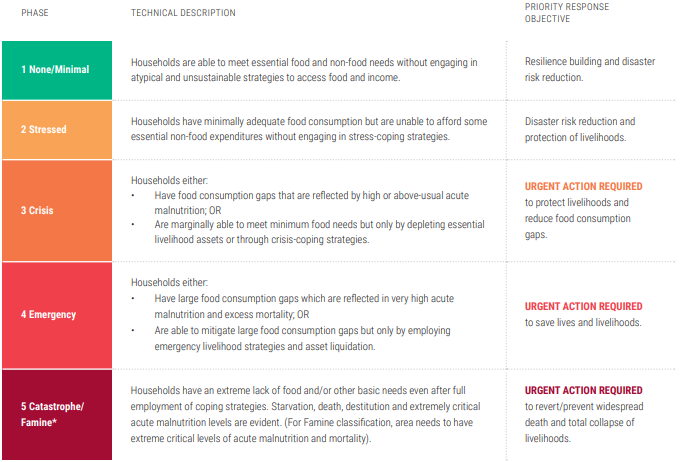
What are the main causes of famine?
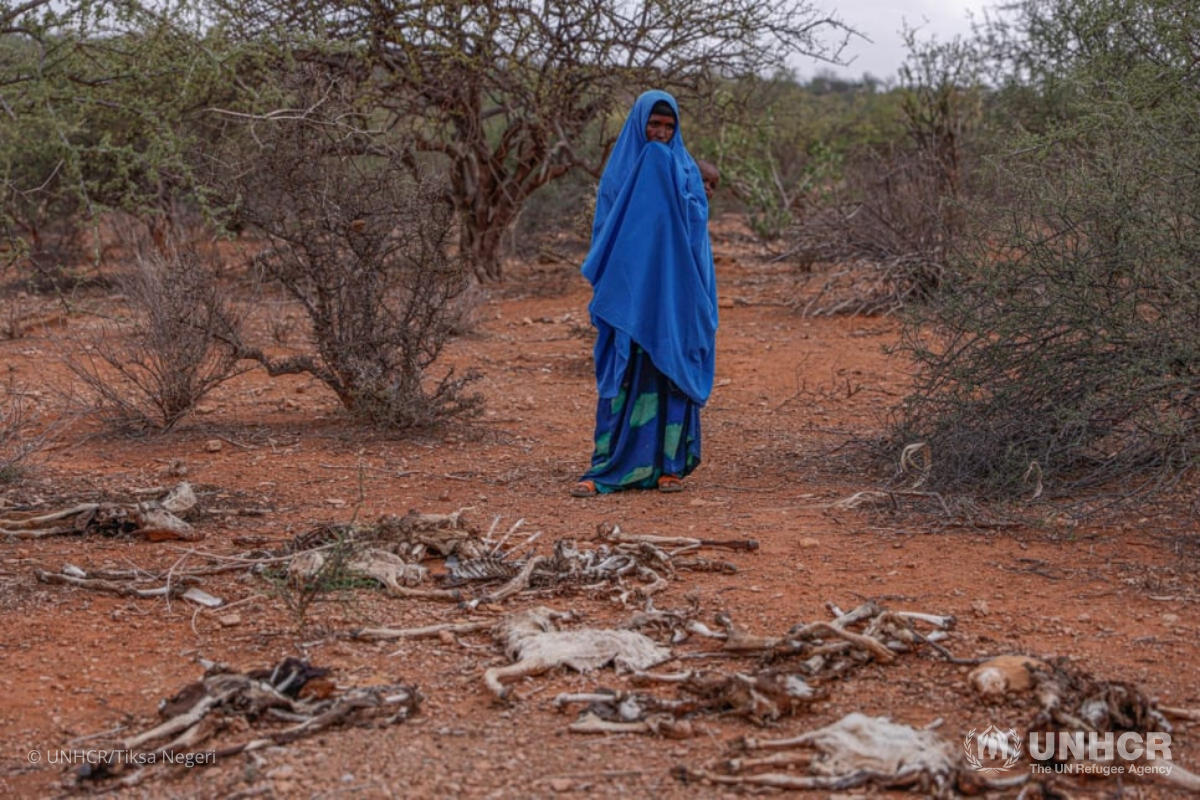
Famine can stem from a combination of multiple factors, such as conflict, displacement, chronic poverty, food insecurity, natural disasters and climate change.
Wars and conflict are usually the primary drivers of famine as they lead to forced displacement, disrupt people’s traditional ways of accessing food and income, hinder humanitarian access and push economies into a long-term decline. Natural disasters - such as droughts, flooding and cyclones - and the effects of climate change can also lead to famine, jeopardizing agriculture and livestock activities in regions where the majority of the population live off the land.
Is there famine in Sudan?
In August 2024, the Famine Review Committee officially confirmed famine in the Darfur region of Sudan. This famine impacts some of the most vulnerable people in the country, including internally displaced people (IDP) living in Zamzam IDP camp. Meanwhile, millions more are at risk of facing famine throughout Sudan.
This is the first determination of famine by the Famine Review Committee in more than 7 years and the third since the monitoring system began 20 years ago.
Since April 2023, the Sudanese people have endured horrific violence as conflict rages on without resolution. More than 10 million people have been displaced within Sudan and beyond its border. As the crisis in Sudan continues to worsen, this famine declaration underscores the desperate circumstances that displaced families face.
Which countries are on the brink of famine?
Food insecurity is soaring across 18 hunger hotspots where conflict, economic shocks, natural hazards and limited humanitarian access are putting millions of lives at risk, according to a new UN report. Burkina Faso, Mali, South Sudan, Sudan and Palestine were added to the list of countries/territories of highest concern as they all have populations facing or projected to face starvation or are at risk of deterioration towards catastrophic conditions. They require the most urgent attention.
Afghanistan, the Democratic Republic of the Congo, Ethiopia, Haiti, Pakistan, Somalia, Syria and Yemen are hotspots of very high concern. All these hotspots have a high number of people facing or projected to face critical levels of acute food insecurity.
Deep economic crisis, severe drought drought, and high food and fuel prices are driving extremely high levels of food insecurity in Afghanistan. Nearly a third of Afghanistan’s population, or 14.2 million people, are experiencing high levels of acute food insecurity (Phase 3 and above) and are in urgent need of humanitarian food assistance. This includes 2.9 million people (7 percent) facing Emergency level food insecurity (Phase 4) and 11.3 million people (25 percent) experiencing Crisis level food insecurity (Phase 3).
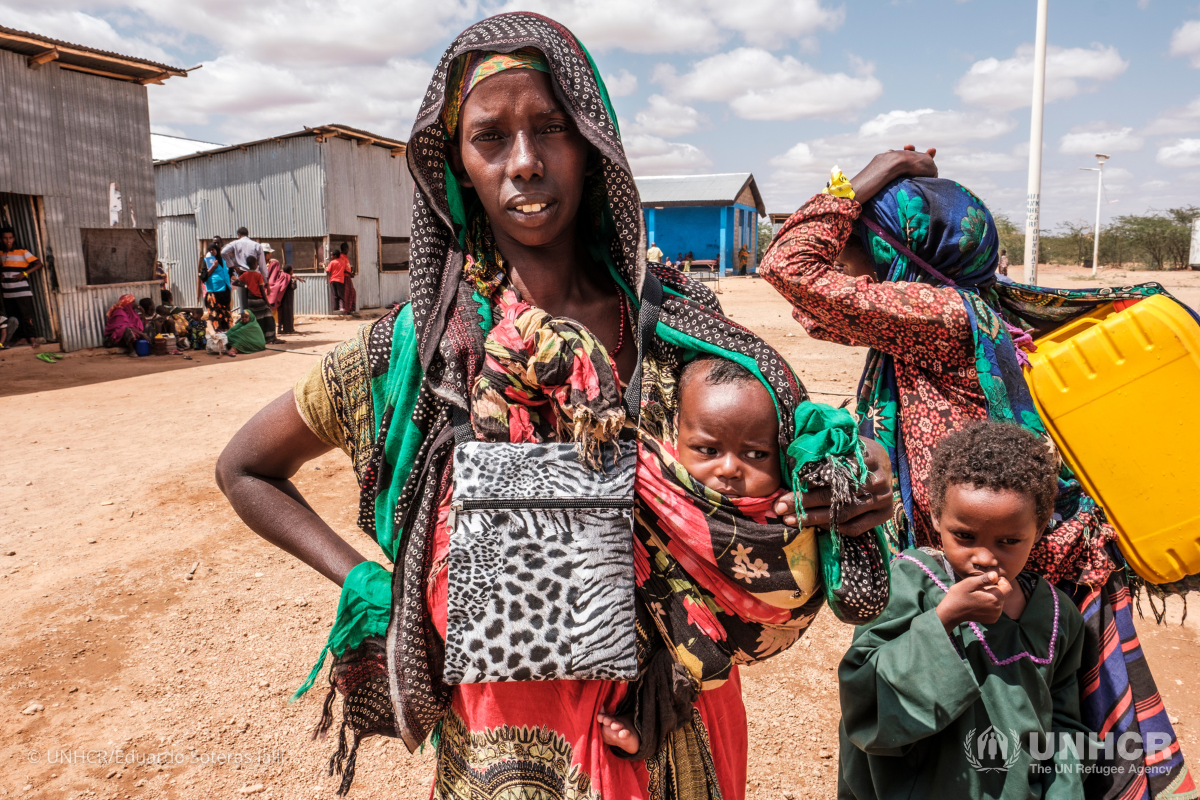
The long-term impacts of COVID-19, five consecutive below-average rainy seasons resulting in one of the worst droughts in recent history, protracted conflict and economic challenges are all contributing to a hunger crisis in the Horn of Africa. The region accounts for nearly 64 million people in need, one fifth of the people in need worldwide, notably in Sudan and Ethiopia.
By January 2024, nearly 58.4 million people were highly food insecure (Phase 3 and above) in the region. In August 2024, famine was declared in the Darfur region of Sudan. Large-scale humanitarian catastrophes in other parts of the region can still be prevented by urgently scaling up funding and expanding humanitarian access.
South Sudan is a country of highest concern facing high levels of acute food insecurity. As the conflict in neighboring Sudan continues, returnees are putting pressure on already scarce resources. Coupled with flood risks and rising food prices, 7.8 million people (63 percent of the population) are projected to face Crisis level food insecurity or worse (Phase 3 and above), including 2.9 million people in Emergency (Phase 4) and 43,000 people in Catastrophe (Phase 5).
Ethiopia and Somalia are hotspots of very high concern—countries where ongoing conflict and an unprecedented six-year drought (the longest in over 40 years) are among the main drivers of acute food insecurity. More than 20.1 million people in northern Ethiopia are estimated to be acutely food insecure while 1 million people in Somalia are projected to face Emergency level food insecurity. For the first time since May 2022, no people are projected to face Catastrophe (Phase 5).
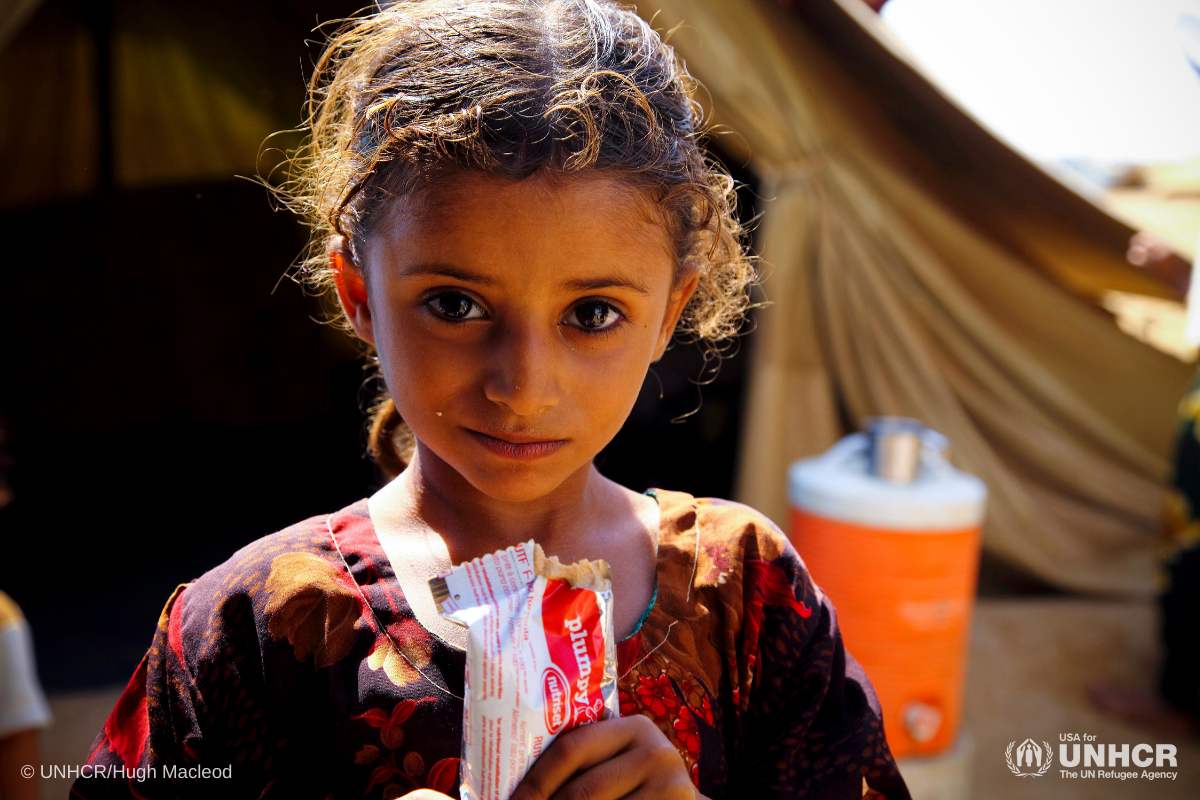
Yemen remains a country of very high concern as it approaches nearly a decade of war. Although the food security outlook in Yemen is less grim than previously projected, acute food insecurity remains at critical levels. At least 20 percent of the population in Yemen are projected to be critically food insecure while 1.1 million are estimated to be facing Emergency level food insecurity (Phase 4)
Who is most at risk when a famine strikes?
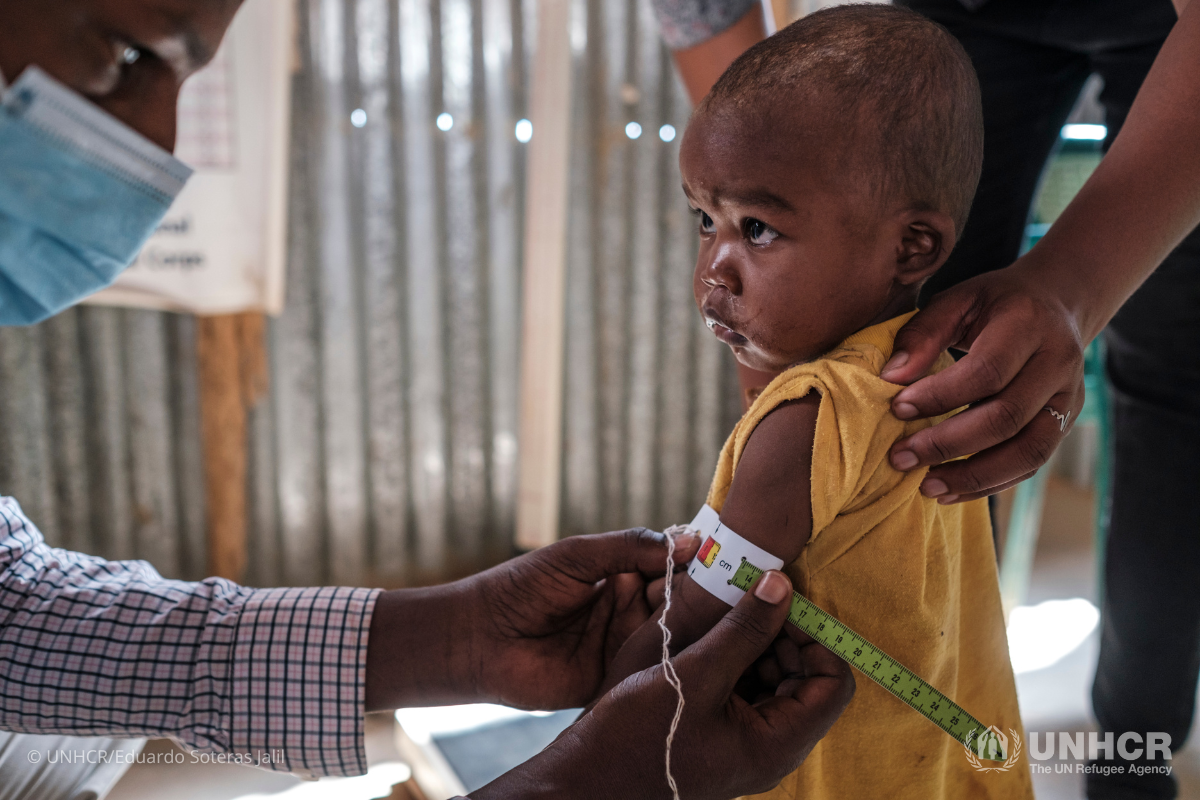
Those without adequate nutrition are at most risk during a famine, particularly vulnerable groups include refugees and displaced people. Among them, displaced children - especially those under 3 years - and pregnant and nursing women face the greatest risk. In Yemen alone, more than 2.7 million children under the age of five are acutely malnourished and 49 percent of children under the age of five suffer from stunting or chronic malnutrition. Nearly 500,000 children are severely malnourished and than 1.3 million pregnant and lactating women are projected to suffer from acute malnutrition.
Children with acute malnutrition are deprived of essential vitamins and minerals required for their proper growth, making them prone to disease, severe developmental delays and even death. In famine-like conditions, millions of children are pulled out of school and sent to work, begging on the streets and often eating just one meal a day.
Displaced women are also disproportionately impacted during famines as they often face barriers to access work opportunities and are at heightened risk of gender-based violence, forced labor and early marriage. Malnourished pregnant or nursing mothers are particularly vulnerable to deadly diseases and pregnancy complications.
What is UNHCR doing to help?
The UN Refugee Agency is working with partners to deliver cash-based assistance and lifesaving supplies - such as clean water, food and sanitation items - to vulnerable refugee and internally-displaced families struggling with food insecurity so that they can cover their most basic needs. Some of UNHCR’s activities in refugee camps also include nutritious interventions to ensure people have access to clean water and nutritious food - especially women, children and other vulnerable groups. UNHCR helps people suffering from malnutrition to access appropriate medical treatment and works with local authorities to identify livelihood opportunities that promote self-reliance. UNCHR is a partner of the global Food Security Cluster (FSC), established in 2011 to coordinate food security responses during major humanitarian crises.
How you can help…
Monthly giving is the most convenient, effective and efficient way you can help people struggling with hunger. Start making a lifesaving difference today. Please become USA for UNHCR’s newest monthly donor.

